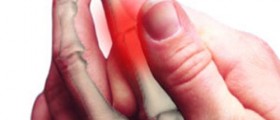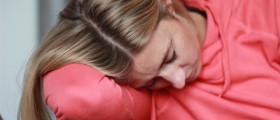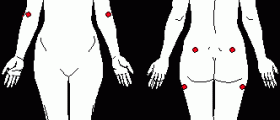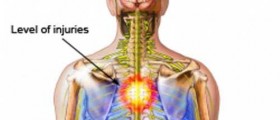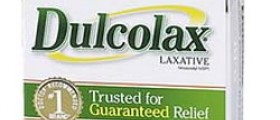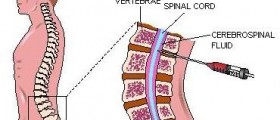When we say “abdominal muscles”, we usually think of the largest and the most superficial muscle called the rectus abdominis muscle (the one forming the 6-pack). Besides that one, there are several more muscles located in three layers of the abdominal wall. Those are all skeletal muscles which normally produce voluntary contractions. However, involuntary contractions may sometimes occur due to various reasons. They rarely affect large muscle groups, but more commonly several fibers of one of the muscles, which is called fasciculation, or more popularly – twitching or jittering. Here are some of the most common causes of abdominal muscle twitching.

Stress
Stress is a very common trigger of muscle twitching. During a prolonged period of anxiety, the smaller muscle groups may be affected. One example is the eyelid muscles, something that can lead to eye twitching sensations. However, any muscle group can be affected and produce similar symptoms.
An increase in adrenaline levels and sympathetic nervous system activation during the time of stress are at the core of this problem. We all experience stress on a daily basis, and short-term muscle twitching is not something to be concerned about. If the symptoms last more than a few days, you should visit your doctors who will maybe recommend some anxiolytic medications.
Electrolyte Imbalance
The balance of electrolytes in the human body is crucial for the proper functioning of all the components of the neuromuscular system. The most important electrolytes include sodium, calcium, potassium, chloride, and magnesium. Sodium is responsible for the initial excitation of any excitable cell. Potassium has a somewhat opposite effect, while calcium is very important for muscle contraction. The optimal concentration of these electrolytes on the inner and on the outer surface of the neurons and muscle cells determines whether the muscles will be contracted or relaxed.
An electrolyte imbalance can occur due to dehydration, inadequate nutrition, or due to some diseases which induce greater loss of electrolytes, for example chronic kidney disease.
Physical Exertion
Increased levels of physical activity can cause damage to the muscle fibers and one of the symptoms of that includes muscle twitching. Furthermore, sweating during prolonged physical activity contributes to dehydration, which induces an electrolyte imbalance. Therefore, the level of physical activity should gradually be increased so that the neuromuscular system can get used to it. The cardiovascular system also requires time to get used to an increased need for blood and oxygen supply.
Neurological Disorders
Muscle twitching is a typical characteristic of disorders of peripheral nervous system. These include mechanical damage of the nerves and peripheral neuropathies caused by diabetes mellitus. However, this is not the rule, and muscle twitching can also occur in central nervous system disorders, such as multiple sclerosis, and mixed disorders of central and peripheral nervous system, such as amyotrophic lateral sclerosis (ALS). Although various sensations related to muscles can be the first signs of neurological disorders, isolated temporary muscle twitching is usually benign.
Treatment
For temporary muscle twitching sensations, it is recommended to take a rest. Try using some of the stress relief techniques, such as yoga or meditation. You can also take vitamin and mineral supplements. Vitamins B6 and B12 are particularly important for the proper functioning of the neuromuscular system, and you can use magnesium supplements for muscle relaxation.
- Stern LZ, Bernick C. Muscle Cramps. In: Walker HK, Hall WD, Hurst JW, editors. Clinical Methods: The History, Physical, and Laboratory Examinations. 3rd edition. Boston: Butterworths. 1990. Chapter 53.
- Rana SS, Schramke CJ, Sangha A, Karpinski AC. Comparison of psychosocial factors between patients with benign fasciculations and those with amyotrophic lateral sclerosis. Annals of Indian Academy of Neurology. 2009. 12(2):108-110. doi:10.4103/0972-2327.53079.
- Walter TR. Benign fasciculation syndrome. J Pain Palliat Care Pharmacother. 2015 Mar. 29(1):54-5. doi: 10.3109/15360288.2014.997856. Epub 2015 Feb 20.
- Wyatt LH, Ferrance RJ. The musculoskeletal effects of diabetes mellitus. The Journal of the Canadian Chiropractic Association. 2006. 50(1):43-50.
- Photo courtesy of SteadyHealth


